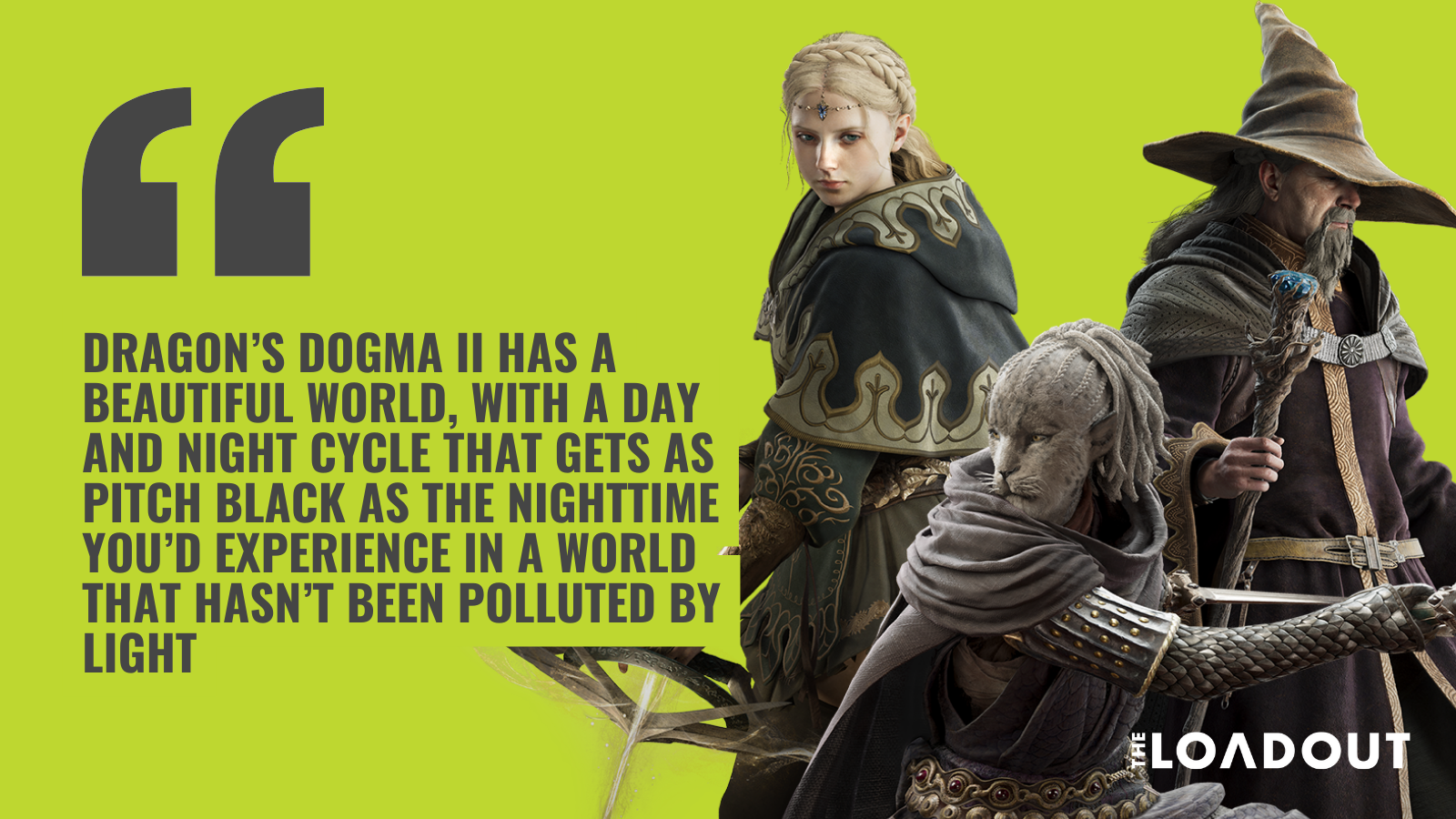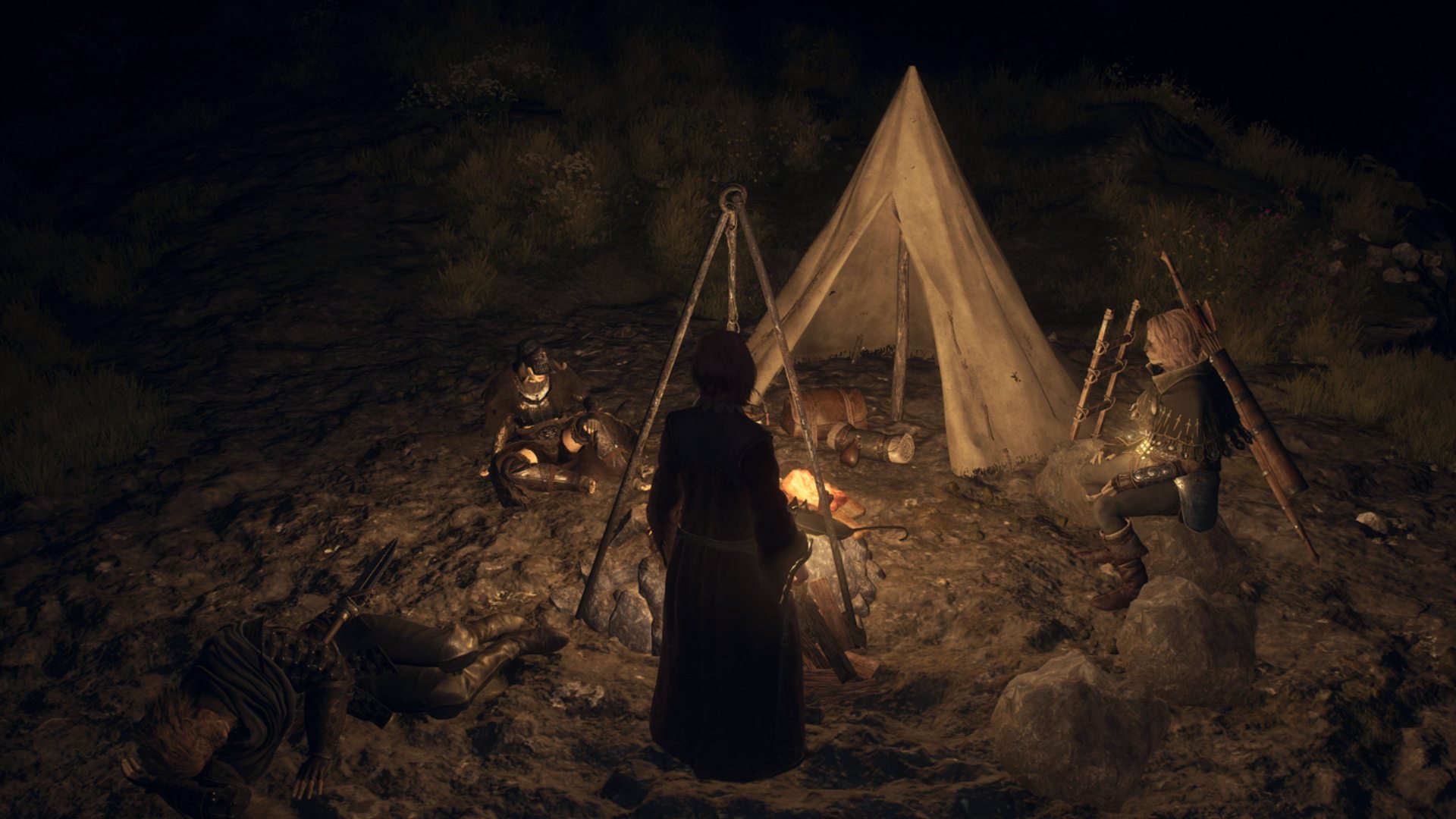RPGs have been pushing boundaries in gaming for quite some time and always seem to be ahead of the curve, especially some of the best RPG games. Dragon’s Dogma was originally released in 2012, where it was considered a gamble for Capcom, who were known for fighting games, Resident Evil and Monster Hunter. This gamble did pay off for Capcom, as Dragon’s Dogma found an avid fan base at the time, going on to sell seven million copies and becoming a cult classic. Now, over 10 years later, a sequel, Dragon’s Dogma 2 is almost here and it has taken a lot from the survival genre to develop its gameplay.
We got to go hands on with expansive RPG in West London earlier this week for an hour and as expected, Dragon’s Dogma II is a beautiful, fantasy adventure RPG where you will be exploring as the Arisen, along with your party of pawns who help you on your journey. You do not actually need to know anything about the previous game, as Dragon’s Dogma II brings you into a tale similar to the first game, but with a decade’s worth of improvements on the gameplay and technology as time has advanced.
Your character is called Arisen, and everyone in the world is looking for you to help them, either with large-scale quests or smaller, people-driven help that could be as simple as bringing an object to someone or giving them some gold. Larger quests, showcased on the map through various symbols, have a direct relation to the story, giving you more of a sense of purpose. You can also choose to ignore all of this and just explore.
Your pawns will follow you, guide you toward your quests, and point out anything of interest on the map. You can fight your way through rogue enemies who happen to be there, find people in need, or just gather everything you can put your hands on.

All those years ago, when Dragon’s Dogma was first conceptualized and pitched, the survival genre hadn’t taken its hold on the gaming world yet. RPGs were RPGs, strategy games were strategy games and the cool thing to add to every game was zombies. Survival games hit big in the early 2010s, with Minecraft, but also games like DayZ starting to find an audience. Suddenly a lot of developers realized that the game’s world itself, rather than the beasts and beings that occupied it, could be an enemy.
That’s the big thing that sticks out for Dragon’s Dogma 2. The first game played with light and darkness, but it was a mood, an effect; while the sequel makes the darkness into a genuine danger. Rattling bones and battle music fill the darkness without warning as skeletons and other undead spring at you while you are trying to find your way to safety. Another common survival-game mechanic, crafting, emerges too, although it isn’t as central to survival as with other games solely in the survival genre. You can now narrowly avoid death by gobbling down a food item as you’re about to die, something that’ll happen more often if you start to place false trust in the world around you, especially as the night rolls in.
The aforementioned pawns, much like in the previous game, use artificial intelligence. They speak to you, encouraging you or even picking on you when you have made a decision that they do not particularly agree with. They fight on their own, explore paths on their own, and often even try to guide you. You are able to interact with them by telling them to stop or follow you, as well as talking to each one. Having all of these ways to guide and interact with your pawns gives you more freedom when it comes to exploring and interacting with the world. You can guide them, they don’t need to guide you.
This use of AI, along with how far it’s come in more recent years, brings in characters who feel like friends – they feel like part of your party. It can be hard to get rid of them after questing together for a short while, as you get used to all of their individual quirks and personality traits. It’s similar in scope to what we have seen with the likes of Sons of the Forest, but more developed and specific to Dragon’s Dogma. While playing, I had a thief who really liked pointing out items on the map that they wanted our party to get – even though I was at max capacity when it came to carrying stuff. Annoying as the reminders were, it felt like a friend traveling with me, trying to help me out.
Dragon’s Dogma II has a beautiful world, with a day and night cycle that gets as pitch black as the nighttime you’d experience in a world that hasn’t been polluted by light. These graphics, showing massive mountains, swaying grass and rushing rivers provide for a truly immersive game.
At night, everything is almost impossible to see, requiring your team to either have their lanterns ready or to just camp for the night and wait for the sun to come back. And, this night cycle isn’t sudden, it’s a gradual thing that slowly takes over whenever you are, becoming dusk and then dark as it becomes the middle of the night. Different types of enemies lurk in the shadows, so deciding if you want to be up while it’s dark or if you want to make camp is a decision you and your pawns need to make.
Setting up camp to survive the night isn’t simple though. You need to have a camping item, which is very heavy, and ready to use. Once you have the item, you need to find an abandoned campfire, then use your own item to create the camp so that you can evade the dangers of the night. Using your camping item will let you create a camp, play a small cutscene, and lets you decide when to wake up – allowing you to avoid the night altogether.
Combat at all times of the day in Dragon’s Dogma II feels intense and smooth. Larger monsters like trolls, that have multiple health bars, require you to work closely with your pawns so that you can defeat them. You have the option to jump on these larger monsters, as well as attempt to throw medium-sized monsters off the edges of cliffs.
Through battling others, you can earn points, which can allow you to level up your characters, add new attacks to them, and better yourself. That, along with finding new weapons and enhancing the ones you have can help you prepare for battles and more challenging quest lines as you get to them.
You can also combine items you find to create something more worth carrying. Combining food to create better healing items is not only great inventory management but also excellent preparation for sticky situations.
Dragon’s Dogma 2 is a perfect example of using technology and new gameplay mechanics over time to the fullest to create something beyond most RPGs and develop what people love about a franchise. The game itself sucks you in, captivating you as you explore the massive world – said to be about 4 times larger than the previous game. But, I would say it feels much larger and stands out the most when it leans into its survival aspects and the darkness rolls in.
The Dragon’s Dogma 2 release date is still a while away so while you wait, why not check out our list of the best PS5 RPGs to play, best Xbox RPG games, best PS5 games, and best Xbox Series X games to play?





